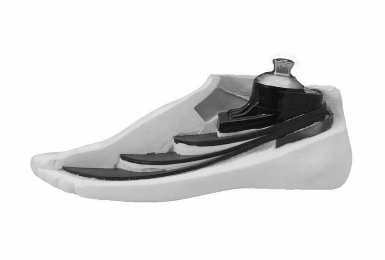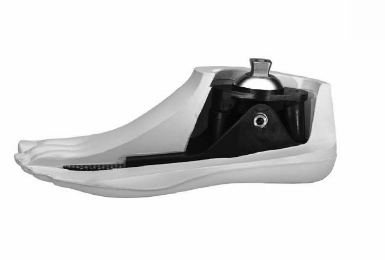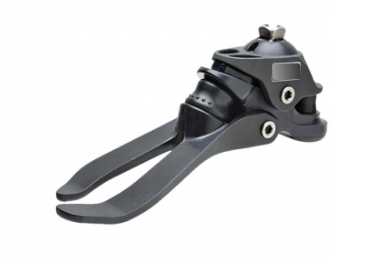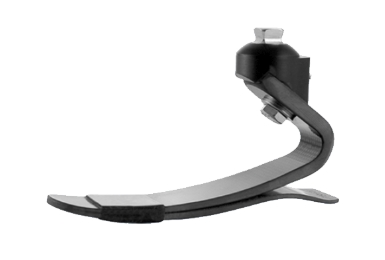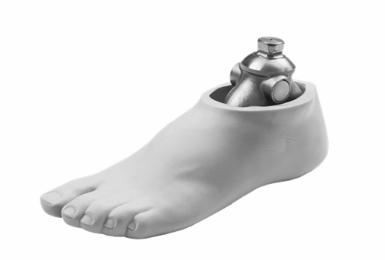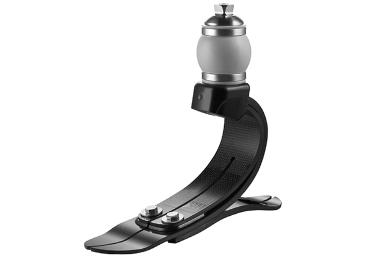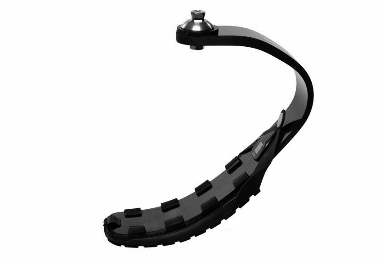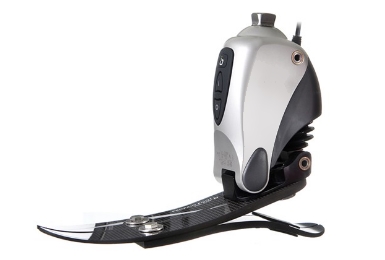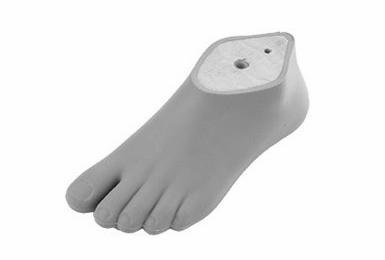
A prosthetic foot of some kind is required for every lower limb prosthesis.
The function of the prosthetic foot is to mimic normal foot function during ambulation. A prosthetic foot does this by providing shock absorption at heel strike, stability at mid-stance and by maintaining a full-length toe lever at toe-off. This allows the user to roll safely and smoothly over the foot as they walk.
Ideally the foot will be light. However, as more desirable features are built into a foot, the weight, complexity and cost increases.
A foot must also be durable and strong enough to sustain the forced developed during ambulation for thousands of cycles. A foot should be designed to wear out gracefully and avoid catastrophic (sudden) failure.
Many variations of feet have been designed. Each manufacturer will have a range of feet for different conditions and users. Your Clinical Prosthetist is trained to understand the different types and will work with the amputee and their caregivers to help them decide which foot will match their amputation level, weight, foot size, activity level and employment and recreational needs.

